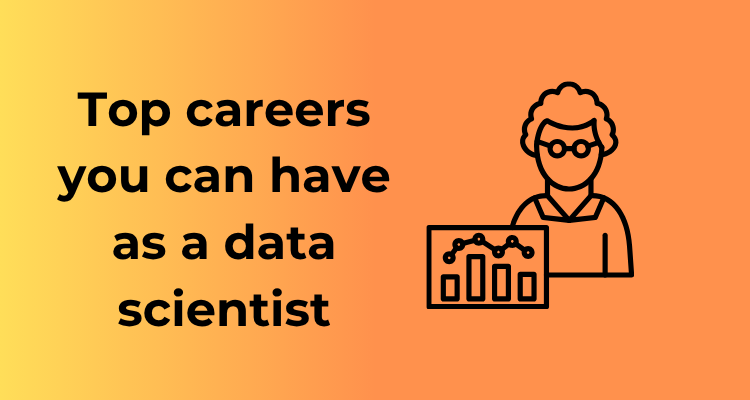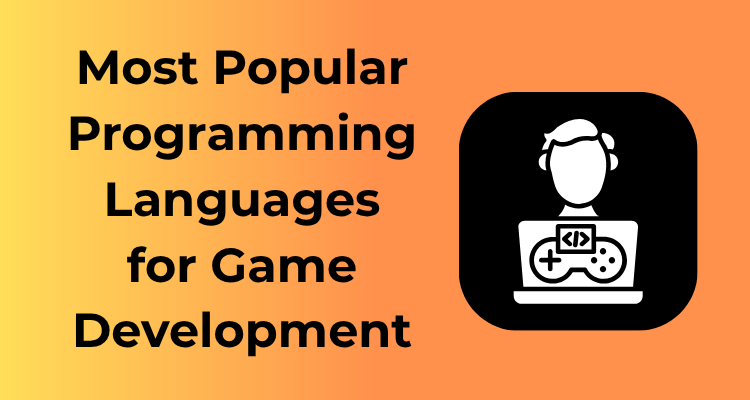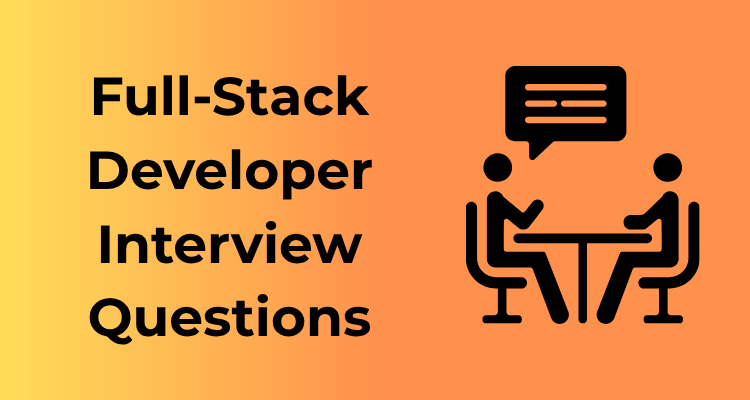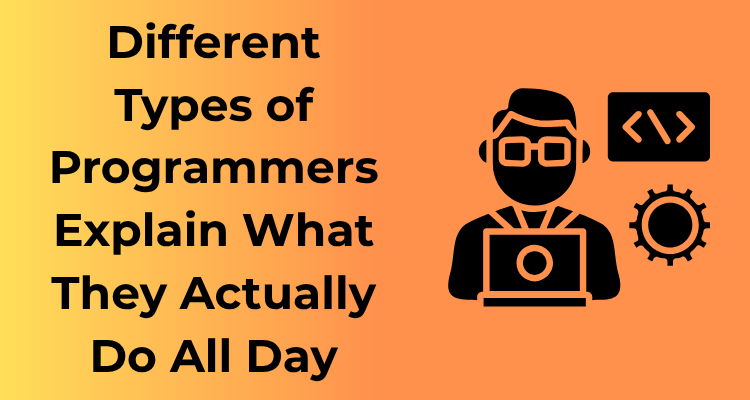If you love working with numbers, algorithms, and real-world impact, building AI-powered financial solutions might be the perfect career path for you as a data scientist. Gone are the days of tallying spreadsheets manually (well, almost!). Banks, insurance companies, and fintech startups now rely heavily on advanced analytics and intelligent systems to make smarter financial decisions, and they’re looking to data scientists to lead the way.
Why Is This Career Exciting?
The financial industry is overflowing with data – from transaction records to credit scores to global investment patterns. Data scientists in this field wield the power to transform this information into actionable insights. Imagine building predictive models that assess loan risks, designing algorithms to detect fraud in real-time, or even optimizing investment strategies with machine learning. You’ll not only be crunching numbers but also shaping the future of money management!
What Skills Do I Need?
- Mathematics and Statistics: A strong grasp of statistical modeling, probability theory, and financial mathematics is crucial.
- Programming: Proficiency in Python or R is key, as they are heavily used for data manipulation, machine learning, and visualization in fintech.
- Finance Fundamentals: Understanding financial concepts like trading, risk management, and portfolio optimization gives you a significant edge.
- Machine Learning Expertise: Know how to implement algorithms like regression, classification, and clustering to solve real-world challenges.
How You’ll Make an Impact
By joining this career path, you’ll be playing a pivotal role in revolutionizing the way people and organizations handle money. Here’s how:
- Fraud Detection: With billions of transactions happening every day, keeping financial systems secure is a priority. Data scientists analyze patterns to catch irregularities that might signal suspicious behavior.
- Personalized Banking: Create AI systems that recommend tailored financial products to customers, such as credit card offers or savings plans based on their spending habits.
- Credit and Risk Analysis: Build predictive models that help lenders determine which borrowers are likely to pay back loans, reducing risk while enhancing lending opportunities for consumers.
- Automated Trading: Help design algorithms that can react to market trends faster than any human trader could, optimizing profits in the process.
What’s It Like Day-to-Day?
Your typical day might include curating datasets, writing Python scripts to train machine learning models, meeting with finance teams to explain your findings, and collaborating with software engineers to implement your solutions into scalable systems. That’s right, you get to wear multiple hats — be a mathematician, a detective, a strategizer, and a tech wizard all in one!
Driving Intelligent Marketing Strategies with Consumer Insights
Have you ever wondered how brands seem to know exactly what you’re looking for, right when you’re thinking about it? Well, there’s a good chance a data scientist is working behind the scenes, using their skills to drive smarter marketing strategies. Welcome to the world of using consumer insights to shape and define the way businesses communicate with their audiences — a strategy that’s equal parts science, strategy, and a sprinkle of digital magic!

Understanding Consumer Behavior
At the heart of driving intelligent marketing strategies is understanding what customers want, need, and prefer. This is where your data analysis expertise comes into play! With mountains of data (think online shopping habits, social media interactions, and even sensor data from devices), brands rely on data scientists to unlock patterns and trends.
- Cluster Analysis: Figure out segments of consumers with similar preferences or behaviors. For example, you may identify a group of young professionals who love workout gear and value environmentally friendly products.
- Behavioral Trends: Spot when customers are browsing, buying, or abandoning carts — and pinpoint why they make these decisions.
- Predictive Modeling: Build models to predict future behavior. Which customers are likely to upgrade to a premium service? Who’s likely to churn? You can help answer these questions through data models.
Sounds pretty impactful, right? These insights drive everything from designing personalized campaigns to refining product offerings.
Creating Data-Driven Marketing Campaigns
Your findings don’t just sit on a spreadsheet collecting dust — they power tangible strategies. Data scientists design algorithms and models that personalize marketing campaigns across channels:
- Email Campaigns: Your research can determine when to send an email and even tailor its content to resonate with a particular customer segment. A personalized subject line? Oh, absolutely!
- Social Media Ads: Ever notice how ads for your dream sneakers essentially read your mind? That’s likely the brainchild of a data scientist who crafted targeting rules based on your data.
- Website Recommendations: Pop-ups like “You might also like…” are there because data spotting your past purchases suggested similar items.
If you’ve got a knack for both creativity and analytics, this career path might feel like a playground for your skills. It’s a dynamic, fast-paced environment that’s rewarding because your work has real-world outcomes — customers feel heard, and brands see results!
Measuring the Effectiveness of Strategies
A big part of driving intelligent marketing strategies also means going back to the lab after execution and evaluating success. Did that campaign generate the ROI anticipated? How many people moved from browsing to actually buying? What can be improved?
For this, data visualization and dashboarding tools become your best friends. You’ll use software like Tableau, Power BI, or Python-based packages such as Matplotlib and Seaborn. Providing clear insights to stakeholders is crucial. A fancy heatmap can often convey key findings much better than paragraphs of jargon-filled text.
Enhancing Healthcare Through Predictive Analytics
Hey there! Let’s talk about one of the most impactful and fascinating career paths in data science—working in the world of healthcare to make real differences in people’s lives through predictive analytics. It’s like being a tech-savvy problem solver and a hero rolled into one!
What Is Predictive Analytics in Healthcare?
Predictive analytics means using data, statistics, and machine learning to forecast future events or trends. In the healthcare industry, it can help doctors, hospitals, and even patients make smarter, data-driven decisions. Imagine predicting disease outbreaks, optimizing hospital resources, or even forecasting a patient’s likelihood of readmission. It’s like giving medical professionals a crystal ball but powered by science!
Why Is This Field So Game-Changing?
Healthcare systems worldwide face a range of challenges like high costs, staff shortages, and managing chronic diseases. This is where predictive analytics shines—it helps tackle these issues with precision and efficiency. Here are a few reasons why this field is revolutionary:
- Better Patient Outcomes: By analyzing patient data, data scientists can help predict at-risk individuals and personalize treatment plans. This means fewer complications and higher recovery rates.
- Cost Efficiency: Predictive models can reduce unnecessary tests and procedures, saving money for both healthcare providers and patients.
- Early Disease Detection: Imagine spotting signs of illnesses like cancer, diabetes, or heart disease early by analyzing patterns in patient data—truly life-saving work!
What Can You Expect in This Career?
As a data scientist in healthcare, you’ll likely team up with medical experts, IT professionals, and researchers to solve real-world problems. Here’s a sneak peek into what your day-to-day could look like:
- Analyzing patient data like medical histories, genetic data, or imaging scans to pull actionable insights.
- Building predictive models to forecast disease outbreaks or trends, which could help with public health planning.
- Collaborating with healthcare teams on projects like optimizing hospital operations or reducing emergency room wait times.
- Ensuring patient data is securely handled, adhering to privacy rules like HIPAA regulations (yep, you’ll need to care about that too!).
Skills You’ll Need
To thrive in this field, you’ll need to wear both your “data expert” and “problem solver” hats. Some of the essential skills include:
- Statistical Analysis: Being comfortable with analyzing lots of data and identifying trends is key.
- Machine Learning: Predictive modeling requires an understanding of machine learning algorithms like decision trees, neural networks, and regression models.
- Domain Knowledge: While you don’t need to go to medical school, understanding basic healthcare concepts will be crucial for your work.
- Communication Skills: You’ll often explain complex findings to non-technical colleagues. Breaking things down into friendlier terms is a superpower!
Where Can You Work?
The opportunities are endless! You could work for:
- Hospitals and Clinics: Helping streamline operations and deliver better patient care.
- Pharmaceutical Companies: Assisting in drug discovery and predicting clinical trial outcomes.
- Health Insurance Firms: Improving risk assessment models and pricing strategies.
- Government and Non-Profits: Supporting public health initiatives or responding to global health crises.
Shaping Autonomous Systems in Transportation
Let’s dive into the exciting world of autonomous systems in transportation! If you’re someone who loves a mix of cutting-edge technology and data science, this career path might just steer you in the right direction. The cool part? As a data scientist shaping autonomous systems, you could help revolutionize how people and goods move around the world.
What Does “Shaping Autonomous Systems” Even Mean?
Great question! Autonomous systems, like self-driving cars, drones, and even delivery robots, rely on large-scale data to “learn” how to operate without human intervention. As a data scientist in this field, you’re essentially the brains behind the brain. Through advanced modeling, machine learning, and predictive analytics, you’re teaching machines to navigate roads, avoid obstacles, and make intelligent decisions in real-time.
Think of it this way—every time an autonomous vehicle encounters an intersection, it’s like throwing it a complex math problem combined with a logic puzzle. Your job as a data scientist is to provide the vehicle with the smarts to solve these problems autonomously, safely, and efficiently. Pretty awesome, right?
Key Responsibilities in This Role
So, what does a day in the life of a data scientist in this space look like? Here’s an overview:
- Building Machine Learning Models: You’ll design algorithms to help vehicles perceive their surroundings and understand how to respond (e.g., stopping for pedestrians).
- Analyzing Sensor Data: Autonomous systems rely on an array of sensors, such as cameras, LiDAR, radar, and ultrasonics. It’s your job to process this data and translate it into actionable insights.
- Simulations and Testing: Before deploying an autonomous vehicle on real streets, extensive simulation is required. You’ll use data to create realistic scenarios through which these systems can be tested safely.
- Ensuring Safety and Compliance: You’ll analyze data to ensure autonomous systems follow regulations and maintain the highest levels of safety for passengers and pedestrians.
Skills You’ll Need to Thrive
Let’s get technical—but not overwhelmingly so! To succeed, you’ll need a solid foundation in these areas:
- Machine Learning: Expertise in supervised and unsupervised learning models is critical.
- Programming Proficiency: Experience in languages like Python, R, or C++, plus familiarity with tools like TensorFlow or PyTorch.
- Mathematics: Know your statistics, linear algebra, and calculus—it’s the backbone of most models.
- Big Data: Handling datasets from sensors and simulations requires skills in data engineering and storage solutions.
- Domain Knowledge: Understanding transportation systems, vehicle dynamics, and even environmental factors will give you an edge.
Why This Career Is Game-Changing
Autonomous transportation isn’t just about cool tech—it’s about shaping the future of mobility. This field promises a safer, more efficient, and eco-friendly way to transport people and goods. Imagine reducing traffic accidents caused by human error (which make up 94% of all accidents, according to authoritative sources) or creating easier access to transport for underserved populations. Being part of this transformative movement means your work could have far-reaching implications on society and the environment.
Designing Recommendation Systems for Streaming Platforms
Let’s admit it: we’ve all spent more time browsing through endless options on streaming platforms than actually watching something. Whether it’s a movie recommendation that feels spot-on or a playlist that perfectly matches your mood, there’s a good chance a data scientist had a helping hand in curating that experience. If you’re interested in this field, designing recommendation systems might just be the perfect role for you as a data scientist!

Why Recommendation Systems are So Important
In today’s world of infinite content, capturing user attention is a challenge. Platforms like Netflix, Spotify, Amazon Prime, and YouTube want to keep users engaged, entertained, and coming back for more. What’s their secret weapon? A robust recommendation system that serves personalized choices for every user.
Without these systems, users might feel overwhelmed or even opt out of exploring content altogether. By creating a tailored journey, data scientists not only improve user satisfaction but also drive key metrics like user retention and watch time.
What Goes Into Building a Recommendation System?
If this career path intrigues you, here’s a quick glimpse behind the curtain of building recommendation systems. These systems rely on clever algorithms to process huge volumes of data and deliver content suggestions. Interested? Here are the core components you’d work with:
- User Behavior Data: What do users watch, skip, or replay? All of this data helps paint a picture of user preferences.
- Collaborative Filtering: Ever heard the phrase “people like you also enjoyed”? This technique clusters users with similar behaviors and recommends content based on mutual interests.
- Content-Based Filtering: Analyze attributes of content (like genres, directors, or artists) and suggest similar items to what a user already enjoys.
- Hybrid Models: Often, platforms combine techniques for even greater accuracy and personalization.
Skills You’ll Need
To design recommendation systems, you’ll need to be a master of both data engineering and user psychology. Here are some must-have skills:
- Programming Skills: Proficiency in Python, R, or Java will help you develop algorithms and analyze data effectively.
- Machine Learning: A strong grasp of predictive modeling and clustering techniques is essential.
- Data Handling: You’ll need expertise in managing large-scale datasets using tools like Hadoop or Spark.
- Problem-Solving: Being able to preempt user needs and turn insights into actionable designs is a game-changer.
Challenges You Might Encounter
Ah, it’s not all glamour and binge-worthy success. Designing recommendation systems comes with unique hurdles:
- Cold Start Problem: How do you recommend content to a brand-new user with no viewing history? Creativity saves the day here.
- Bias in Algorithms: Balancing fairness (representing diverse content) and user patterns is tricky but vital.
- Scalability: Managing recommendations efficiently for millions of users requires top-tier coding and systems thinking.
Optimizing Supply Chains Through Data Modelling
Have you ever marveled at how your favorite online store manages to deliver your purchase right to your doorstep, often the very next day, no matter where you are? Behind this orchestration stands the power of data science. Optimizing supply chains through data modeling is one of the most impactful and intellectually satisfying careers for a data scientist. Curious to learn more? Let’s dive into why this field is so exciting and how data scientists are reshaping the way goods move across the world!
Why is Supply Chain Optimization Such a Big Deal?
Think about it: the global economy thrives on the ability to get products from manufacturers to consumers efficiently. For businesses, having a streamlined supply chain means reduced costs, faster delivery times, and happier customers. However, supply chains are immensely complex—they involve multiple stakeholders, geographical factors, unpredictable disruptions (like weather or pandemics), and rising customer demands for speed. That’s where data scientists come in!
What Does a Data Scientist Do in This Space?
Data scientists in supply chain roles leverage powerful tools like machine learning, predictive analytics, and optimization algorithms to solve problems that range from inventory management to delivery logistics. Let’s break it down a bit further:
- Demand Forecasting: By analyzing historical data, seasonal trends, and market demand, data scientists can predict how much of a product is needed at a given time. This minimizes overproduction or understocking, helping businesses stay cost-effective.
- Routing Optimization: Algorithms can identify the fastest, most cost-effective delivery routes by considering factors like traffic, fuel consumption, and weather patterns.
- Minimizing Supply Chain Risks: Using sophisticated models, data scientists can spot risks in the supply chain—such as supplier delays or geopolitical disruptions—and recommend contingency plans before they occur.
- Warehouse and Inventory Management: Data drives decisions about where to store products, how much inventory to hold, and how to replenish stock efficiently.
What Does It Take to Excel in This Career?
If supply chains sound as exciting to you as they do to me, you might be wondering, “What skills do I need to thrive in this field?” Well, here are a few key areas to focus on:
- Data Analysis and Modelling: You’ll need strong skills in data visualization, predictive modeling, and optimization techniques.
- Proficiency in Tools: Tools such as Python, R, SQL, and optimization libraries like PuLP or Gurobi are commonly used in supply chain roles.
- Business Acumen: The ability to understand business challenges and align analytics to solve real-world problems is a must.
- Communication Skills: You’ll often work with logistics managers and executives, so explaining complex models in plain language is essential.
Securing Organizations with Advanced Risk Analysis
Have you ever thought about how businesses and organizations protect themselves against looming threats and uncertainties? As a data scientist, you could be the superhero ensuring that companies stay ahead of financial risks, security breaches, or even market instability. Let’s dive into the thrilling world of securing organizations with advanced risk analysis. Don’t worry, I’ll keep it exciting!
What Is Risk Analysis?
Risk analysis is all about identifying potential challenges and evaluating their impact so businesses can make informed decisions to avoid problems down the road. Think of it as spotting cracks in the ground before they turn into massive sinkholes. It includes analyzing financial risks, detecting security vulnerabilities, and anticipating market trends by harnessing the power of data.
Your Role as a Data Scientist
As a data science whiz, you’ll be using machine learning models, statistical analysis, and predictive tools to understand data patterns and scrutinize potential risks. You’ll work with a mix of historical data, live feeds, and predictive analytics to map out what might go wrong—and recommend action plans to mitigate those risks.
Here’s how you could secure organizations:
- Fraud Detection: By analyzing massive transaction data, you can help sniff out unusual patterns and anomalies that signal fraudulent activity. Banks and financial institutions love data scientists for just this reason!
- Cybersecurity Enhancement: Ever heard of hackers trying to breach systems? Your expertise in data modeling can pave the way for implementing algorithms that detect potential cyber-attacks in real-time.
- Market Risk Predictions: In industries like banking or retail, your predictive skills could help understand how market fluctuations impact their revenue and suggest ways to offset potential downturns.
Industries That Depend on Risk Analysis
Advanced risk analysis is needed everywhere! Here are a few industries crying out for data-driven experts:
- Finance & Insurance: From stress-testing portfolios to understanding insurance claim probabilities, these sectors lean heavily on risk analysis brilliance.
- Healthcare: Risk assessment is vital for preventing data breaches of sensitive patient information or determining the effectiveness of new treatments.
- Technology: Tech companies often track risks related to algorithm biases or system failures using cutting-edge models developed by data scientists.
Skills That Give You An Edge
Want to stand out in this field? Here’s what will give you an edge:
- Programming Know-How: Languages like Python or R go a long way when it comes to building models and crunching numbers.
- Machine Learning Expertise: Familiarity with algorithms and predictive modeling is essential to detect and preempt risks effectively.
- Strong Communication Skills: Being able to explain your findings to executives or clients who might not be tech-savvy is key.
- Attention to Detail: Risk details can be super nuanced, so a sharp eye for patterns will serve you well.









